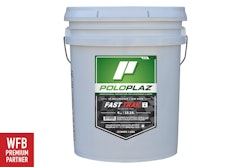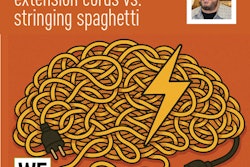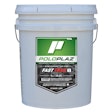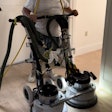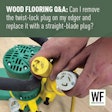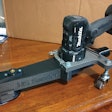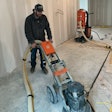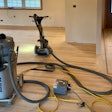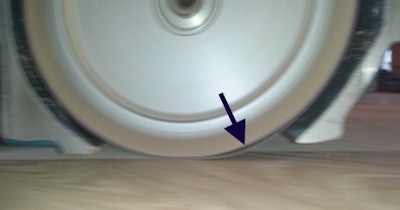
I have been told that my wit and made-up words seem to never end, so let me give you a new one.
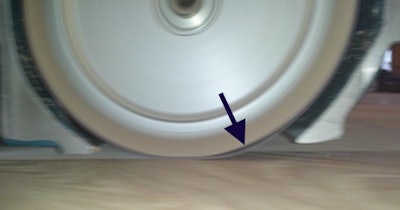 That gap between the drum and the abrasive can cause chatter.
That gap between the drum and the abrasive can cause chatter.
This is my made-up phrase of the day for one of those hard-to-find causes of chatter: “Pocket pop.” Not one that makes a hard chatter, but just enough to see it when you stain. A multi-disc sander will remove it, but let’s talk about how to prevent it.
I find this on belt sanders with a soft foam or soft rubber drum. It is due to a few things that are easy fixes:
- The upper roller may not be moving freely up and down so it can keep the correct pressure on the paper.
- Make sure the upper roller is clean and not allowing the paper to skip over.
- Make sure your drum is true; an out-of-round drum will act like a speed bump.
- Make sure the drum is not delaminating.
- Make sure that the head pressure is not set too high.
- Make sure the sandpaper is not oversized.
- Make sure the paper has a good seam.
Like I said, this pocket is hard to see. The “pop” side of the problem will not show up or leave the pocket until you have the drum on the floor, so if you cannot run and watch the unit at the same time, make sure to listen for the pop. I was able to hear it from the get-go on this machine and then asked someone to run the unit while I took video of it running and got the photo.
We had to dress this drum to get it cutting flat, and the problem went away.
We had to dress this drum to get it cutting flat, and the problem went away. The best way to dress the drum is on a very flat plate or spot on a solid floor. I use 100-grit paper so I have a fine cut and have more grit in a tight pattern. (Remember that not all drums can be dressed; if you have a Hummel, don't dress your drum!)
I will do a Wayne “Thinking Out Loud” video post on dressing a drum so you can see how I do it; keep an eye out for the post.















